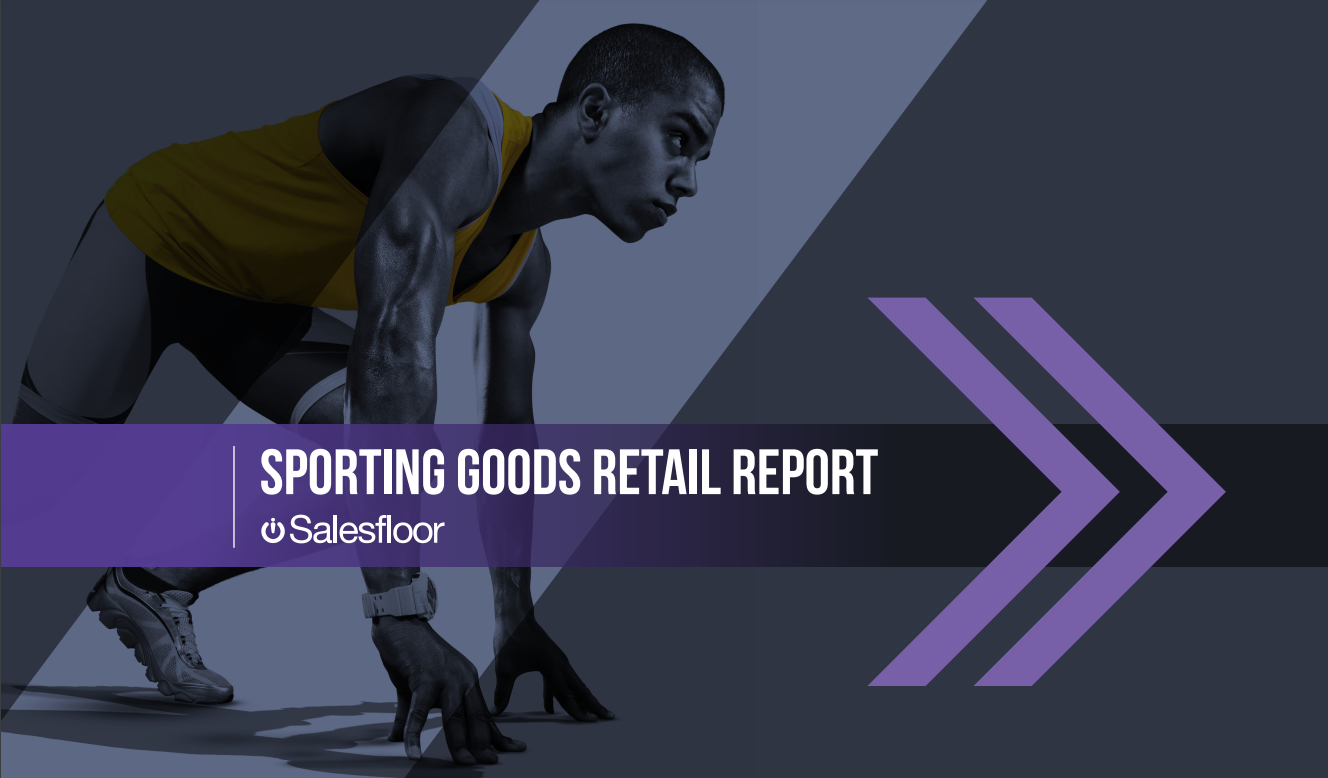We know that the pandemic has been rocket fuel propelling the digital acceleration into warp speed. We have previously written about other trends anticipated to impact niche retail markets. In this article, we look at the sporting goods industry.
The sporting goods retail sector is facing developments unique to its market that retailers must contend with (alongside widespread movements in general retail). This article provides a high level overview of trends and topics that will shape the rapidly evolving sporting goods retail industry in 2022.
[hubspot_cta_button link=”https://resources.salesfloor.net/apparel-industry-report” text=’Download “State of Apparel”‘]
Taking the Direct Approach
Although the COVID-19 pandemic created a dramatic surge in online shopping when widespread lockdowns temporarily shut down most gyms and brick-and-mortar stores, sporting goods retailers saw an extra spike in digital demand as consumers transitioned their workout routines to home or flocked to the outdoors for their workouts. With new variants and the threats of new lockdowns that come with them, it’s not surprising that experts like NPD Group’s Matt Powell expecting major brands’ direct-to-consumer (DTC) sales approaches to expand throughout the year. Subsequently the sporting goods market is likely to see more investment in online shopping services (as e-commerce is a major DTC sales channel).
Of course, DTC sales are all about connecting directly with the customer, making seamless interactions between associates and customers an important part of the experience. According to McKinsey & Group research, companies “…that were able to streamline the connection between engagement and sales were able to boost profits significantly and even build digital consumer-engagement ecosystems…” They also expect the well-established but primarily Asian use of live-streaming as both a promotional and sales tool to expand globally over the year. Much of this trend will be driven by powerful social and sales applications like Salesfloor which are central to consumer-engagement ecosystems by connecting sales associates directly to online customers for exactly the streamlined experience suggested.
CSR, Sustainability, & DEI
Corporate Social Responsibility (CSR) has become increasingly important to consumers in general, but it’s especially important for sporting goods clients. Sustainability is also a major concern for a strong majority of sporting apparel customers (67%) per McKinsey’s research as well. With social distancing a now common phrase, Powell expects sporting goods consumers to remain dedicated to healthy living, but from afar. That’s not good for every retailer, but outdoors activewear and sports equipment are likely to outperform other sports-sectors throughout the year.
It should also be noted that diversity, equity, and inclusivity initiatives are on the rise in both sports and sports retail as well. Retail Dive’s Senior Editor Cara Salpini noted that both Nike and Adidas have faced controversy over their treatment of women or visible minorities in recent history and suffered in the marketplace for it. Although no longer front of mind for customers, 2022 will see a continued focus on improving inclusion and diversity within sporting good retailers’ corporate cultures.
Preparing for the Future
Barring another global event such as the pandemic, the future of sporting goods retail generally looks pretty good for the foreseeable future. That doesn’t mean there aren’t some major headwinds sports retailers should be aware of though.
First, as stimulus money dries up and inflation drives inevitably drives interest rates up, consumers will have less disposable income. The industry is still projected to grow 8-10% a year until 2025, but brands will have to compete hard for their share of it.
Second, unsurprisingly, are supply-chain problems. We’ve written about this topic substantially already and the sporting goods sector is no exception. The problem has grabbed its share of headlines so there’s not much else to be said other than to expect the problem to last at least until Q3 of this year if not longer.
However, it’s the third headwind, and perhaps most disturbing in its own way, that retailers need to keep an eye on. Remember the DTC trends we mentioned earlier? Major brands are also using the direct-to-consumer approach we mentioned, but some are dropping retailers who don’t add value to their brand. As a result, it’s more important than ever for retailers to bring their A game to the direct-to-consumer market with a cohesive digital customer service strategy and the tools to deliver it to demonstrate their commitment to positive customer experiences to consumers and suppliers alike.
The Takeaway
The sporting goods sector of the retail market has recovered substantially after the economy-breaking rise of COVID, but that doesn’t mean everyone’s going to come out a winner. Retailers that perform well in the direct-to-consumer market by offering sustainable goods using advanced technology in a diverse and inclusive (albeit online) environment stand the best chance of capitalizing on current consumer trends and capturing future sporting goods sales growth.
Subscribe to The Influencer and enjoy industry news and thoughtful insights delivered right to your inbox.
[hubspot_cta_button link=”https://salesfloor.net/newsletter/” text=”Subscribe to the Newsletter”]

